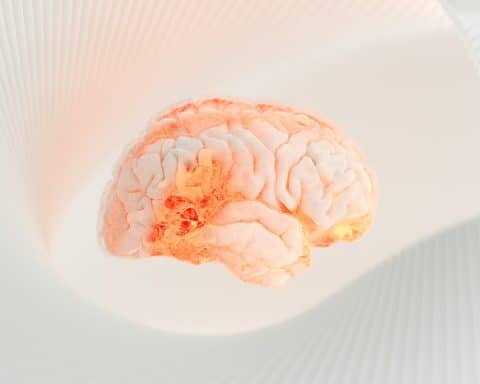 Paul Thomas is a carer, GP, and academic, with longstanding interest in integration of efforts for health and care
Paul Thomas is a carer, GP, and academic, with longstanding interest in integration of efforts for health and care
The RCGP general election manifesto 2024 reminds us that “GPs work at the heart of their communities, striving to provide comprehensive and equitable care for everyone...”
Julian Tudor Hart would have approved. In 1961 he became a GP in Glyncorrwg, a small mining town in the South Wales Valleys. His work, radical at the time, contributed to the present expectation that primary care should be central to compassionate communities.1 He pointed out that an engineering/mechanistic approach to medical science prevents GPs from doing a good job, contributing to the present NHS crisis:
“The misrepresentation of medical science as the solid, simple, Newtonian certainty of engineering…… has misled not only the public, but the profession itself (p.50)”2
Before he became King of England, Prince Charles said a similar thing: “It is the way we see the world that is ultimately at fault (p6)…. far too firmly framed by a mechanistic approach to science… (that) assumes authority beyond the area it is capable of considering (p.10)…”3
Mechanistic, linear, atomised thinking – the elephant in the room
Julian Tudor Hart… pointed out that an engineering/mechanistic approach to medical science prevents GPs from doing a good job, contributing to the present NHS crisis…
Newton’s 17th century thinking has been romanticised as an apple falling on his head. This linear, atomised image of how the world works is attractive – it makes everything seem identifiable, controllable, predictable. It was given a boost in the 19th century by Comte who proposed an approach to inquiry called positivism (‘laboratory research’) and Osler in the 20th century who advocated its use in medicine (‘evidence-based medicine’). Hence the term ‘medicalisation’ being used to imply mechanistic dehumanisation.
Linear, atomised, ‘medical’ thinking is needed – some things need precise identification and targeted action. But, on its own, it leads to linear, atomised thinking about everything else – carrots and sticks, hierarchies and priorities, conflict and blame. It looks at the world through a pinhole camera – it sees ‘Facts’ but not ‘Stories’; ‘Diseases’ but not ‘Health’; ‘Individuals’ but not ‘Communities’; ‘Mechanistic’ but not ‘Organic’ growth. In the mathematical categories of ‘simple, complicated and complex’, linear, atomised thinking is firmly in the ‘simple’ group.
It’s not just doctors who are in trouble from too much linear thinking – many in education, politics, faith traditions, businesses, everyday life consider atomised, linear thinking to be the ONLY way to think about life. Many only come to realise the limitations of this way to think when they experience something complex, difficult or painful – then it becomes obvious. For too many, this realisation comes too late to avoid making BIG mistakes with long-term damaging consequences.
To understand complex things like ‘hearts of communities’ and ‘comprehensive, equitable care’, GPs need to combine atomised thinking with thinking about connections and relationship-building. To address 21st century issues, societies also need everyday citizens to understand these things. One difficult question is – how can we do this, when linear, atomised thinking is so attractive, and many seem unable to accept anything different until they themselves have experienced significant difficulties that successfully challenge their world-views?
Facts are snapshots of stories-in-evolution
People don’t really believe that linear, atomised thinking is the only way to think. Societies have always valued the art of medicine as well as its science, qualitative as well as quantitative research, generalist as well as specialist practice. The challenge is less to decide which is better, and more how to integrate insights from different perspectives.
Guba and Lincoln argue that different ways of thinking can be integrated by a research methodology called 4thgeneration evaluation.4 Stakeholders attend a sequence of workshops at which they negotiate the meaning of different kinds of evidence in the light of their lived experiences. In-between events they do things to understand the issues better; and incrementally transform them. Participants recognise that ‘facts’ are snapshots of this dynamic process and good progress comes from cycles of reflection and action that pay attention to both facts and stories. They use three paradigms of inquiry: positivism, critical theory and constructivism, to see atomised, inter-connected and co-adaptive phenomena. A similar approach is advocated by other theories of development, for example: systems and complexity theories, participatory action research, learning organisations… etc.
4th generation evaluation is a process of shared story-making. The image of complex co-adaptation helps to envision what is going on – everyone is adapting to changes in everyone else, co-creating new understandings. The image of complex co-adaptation is widely used. Pert maintains that “Emotions are constantly regulating what we describe as reality”[p147].5 Capra describes how “seemingly chaotic behaviour can give rise to subtle and beautiful patterns”[p122].6 Shotter argues that individuals and communities co-create each other – the “flow of activity” in dialogic exchanges causes “identities of feeling” and “common sense”[p54].7 It’s not a new idea – by ‘Survival of the Fittest’ Darwin did not mean survival of the most physically ‘fit’ but of those that adapt to ‘fit in’ with others, as his example of the giraffe shows – adapting to reach leaves that other animals can’t.
MacIntyre explains that people instinctively use stories. He describes the human need for ‘narrative unity’8 – “…man is, in his actions and practice, as well as in his fictions, essentially a story-telling animal”[p216] …. “The self inhabits a character whose unity is given as the unity of a character”[p.217] …”I am part of their story as they are part of mine”[p.218].
If general practice wants to fulfil its vocation in the 21st century, it must apply this wealth of wisdom.
Healthcare needs Community-Oriented Integrated Practice
I think about it like this: I am the lead actor in the ‘film’ that is my life story and co-actor in the ‘films’ of many others.9 Each of us has many ‘story-strands’. My identity, sense of meaning, and networks of relationships (comm-unities) develop within these stories. Health is whatever helps me to travel hopefully within and between my story-strands. I call it Community-Oriented Integrated Practice (COIP)10 – a way of thinking & acting that facilitates local collaboration for health and care.
To develop hopeful life stories despite the ‘rain’ of everyday issues it helps to periodically go under ‘umbrellas’ where we can stand back with others to review progress, learn and refocus for our next stages of life. Linear thinking helps to implement conclusions from these ‘connected learning spaces’; this is useful as long I remember that these acts are not the story itself, but steps within it. This approach can develop trusted relationships in different contexts. For example, ‘continuity of care’ can be seen as a sequence of ‘umbrella-meetings’ between GPs and Patients.
This metaphor of ‘connected learning spaces’ (umbrellas within the rain of life’s issues) helps to see how healthcare can contribute to community-oriented integrated practice:
- Health Workers treat ‘diseases’ to ease pain; and also help people to see that dis-eases are opportunities for self-care, shared-care and new directions in their life stories. This is especially important for generalists, like GPs, but everyone benefits from considering discrete issues in the context of evolving life stories – everyone can move between considering focused difficulties and longer-term journeys.
- Public Health and Academic Researchers use 4th generation evaluation to provide insights into stories-in-evolution, at the same time developing compassionate communities.
- Primary Care Networks (PCNs) develop case studies of COIP, using routinely-gathered data (e.g. place of death; hospital admissions) to witness the overall effect of integrated working.
- Policymakers require people to facilitate cycles of collaborative reflection and coordinated action to develop trusted relationships and compassionate communities.
- Carers develop COIP-thinking and COIP-practice, becoming bridges between communities and public services, and part of the social ‘glue’ that builds compassionate communities.11
How to Achieve Community-Oriented Integrated Practice
The NHS crisis is mirrored by a crisis in humanity.
COIP has the same aim as the Alma Ata vision for ‘Strong Primary Health Care’,12 agreed by 134 countries in 1978. What has not yet been emphasised enough is that people often need difficult experiences to wake up – life is not perfect and bad things can be opportunities to do good.
How can we strike a balance between avoiding difficulties and using them for good? Carers might be an answer because they are in this role because of difficulties. Crisp reminds us that Carers prevent the collapse of society: “one in five people aged between 50 and 70 are regular care providers…” and “Informal carers and voluntary organisations provide services that, if monetarised, would amount to the same value as the country spends on the NHS and social care”[p90]. Supporting Carers might help the NHS crisis. They could become a focus for the development of COIP, if:
- Public services provide Continuity of Care for households where there is a Carer. ‘Patient-Centred Care’ would become ‘Family-Centred Team-Care’ for this section of the population.
- Action Learning Sets help Carers to learn from their experiences and use their skills to develop compassionate communities in their areas.
- Primary Care Networks develop supportive infrastructure, including Courses for Carers (and others) to lead Community-Oriented Integrated Practice.
- Local Organisations – Schools, Faith Traditions, Pharmacists, Undertakers, ‘Corner Shops’ – use difficult situations to develop compassionate communities.
The NHS crisis is mirrored by a crisis in humanity. Whitehouse argues that the polycrisis “…requires relearning to fundamentally transform our thinking and valuing (including) healthier communities with greater equity and concern for nature”.14 Hannah points out: “Since the inception of the NHS 75 years ago, our daily lives have changed beyond recognition socially, economically, technologically, psychologically and spiritually…. requiring a more holistic view of health and illness”.15
All of this affects the GP role – more, it challenges GPs to take a lead in developing community-oriented integrated practice. None of this is easy. But general practice attracts some of the most altruistic and intellectually-able of each generation. If anyone can make compassionate communities and community-oriented integrated practice work – they can.
References
- Abbey E, Craig C, Mayland CR. General practitioners’ perceptions of compassionate communities: a qualitative study. BMC Palliat Care, 6;19(1):97; 2020. https://pubmed.ncbi.nlm.nih.gov/32631288/.
- Tudor Hart J. A New Kind of Doctor. London: Merlin Press Ltd. 1988.
- HRH The Prince of Wales, Juniper T, Skelly I. Harmony; A new way of looking at the world. London: Blue Door; 2010.
- Guba E, Lincoln Y. Fourth generation evaluation. Newbury Park, California: Sage; 1989.
- Pert C. Molecules of Emotion. London: Simon & Schuster (Pocket Books);1999.
- Capra F. The Web of Life. London: Flamingo New York: Bantam Books; 1997.
- Shotter J. Conversational Realities – Constructing Life through Language. London: Sage; 2000.
- MacIntyre A. After Virtue: a study in moral theory. 2nd edition. London: Duckworth; 1985.
- Thomas P. Collaborating for Health. Abingdon: Routledge; 2018.
- Thomas P, Calamos L, Chandok R, Colin-Thomé D. Developing Community-Oriented Integrated Practice. Health Matters; 2022: healthmatters.org.uk/Library/coip_0322.pdf
- Thomas P. How Carers Can Help Develop Community-Oriented Integrated Practice. Journal of Holistic Health; 2024. In Press.
- Macdonald J. Primary Health Care – Medicine in its place. London: Earthscan; 1992.
- Crisp N. Health is Made at Home; Hospitals are for Repairs. Billericay: Salus; 2020
- Whitehouse PJ. Challenges and opportunities for Community-oriented Integrated Practice in the polycrisis. Journal of Holistic Health; 2024. In Press.
- Hannah M. 21st Century Health & Care Needs. Journal of Holistic Health; 2024. In Press.
Featured Photo by Paul Knight on Unsplash







Thank you Paul – superb